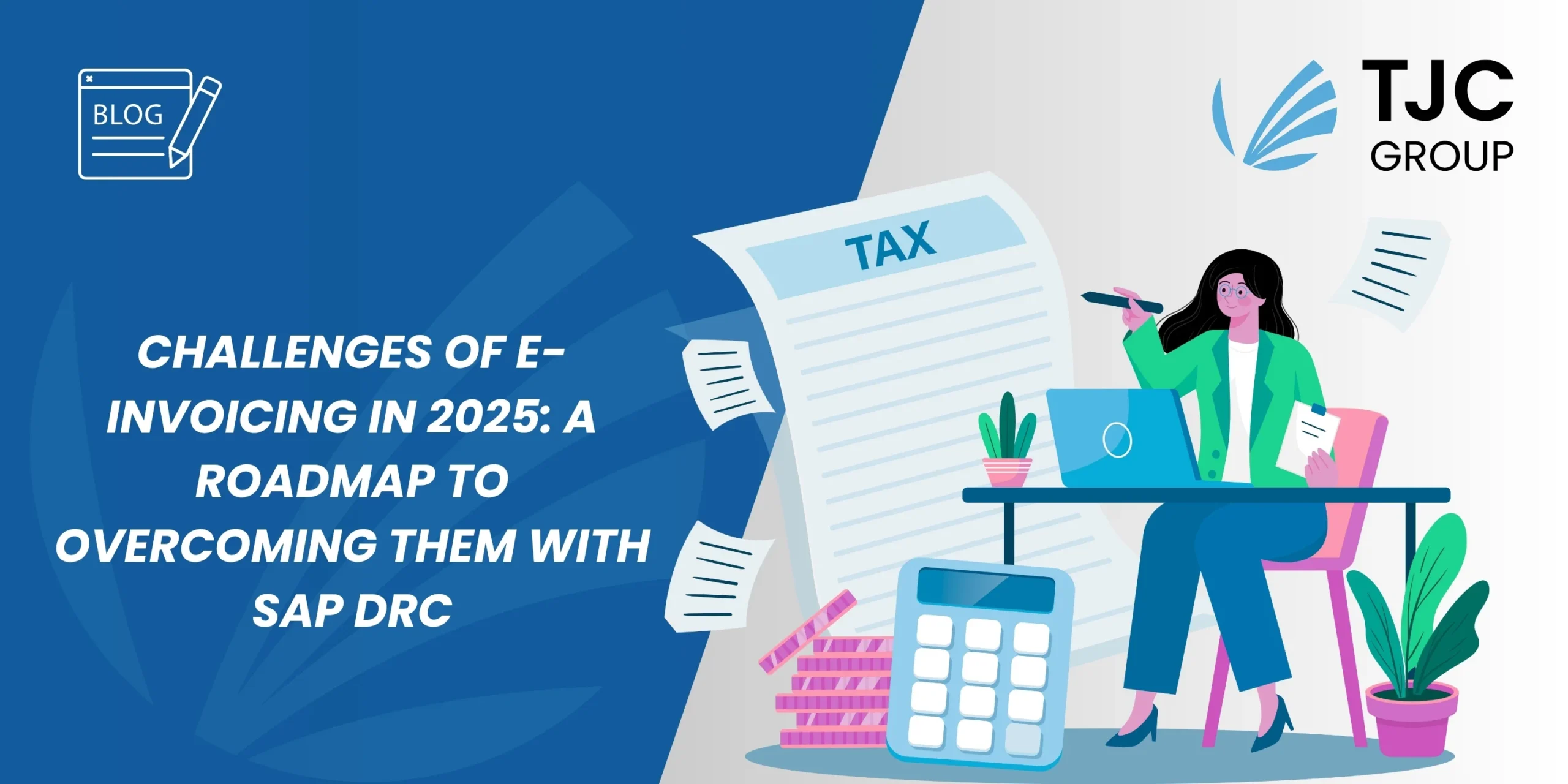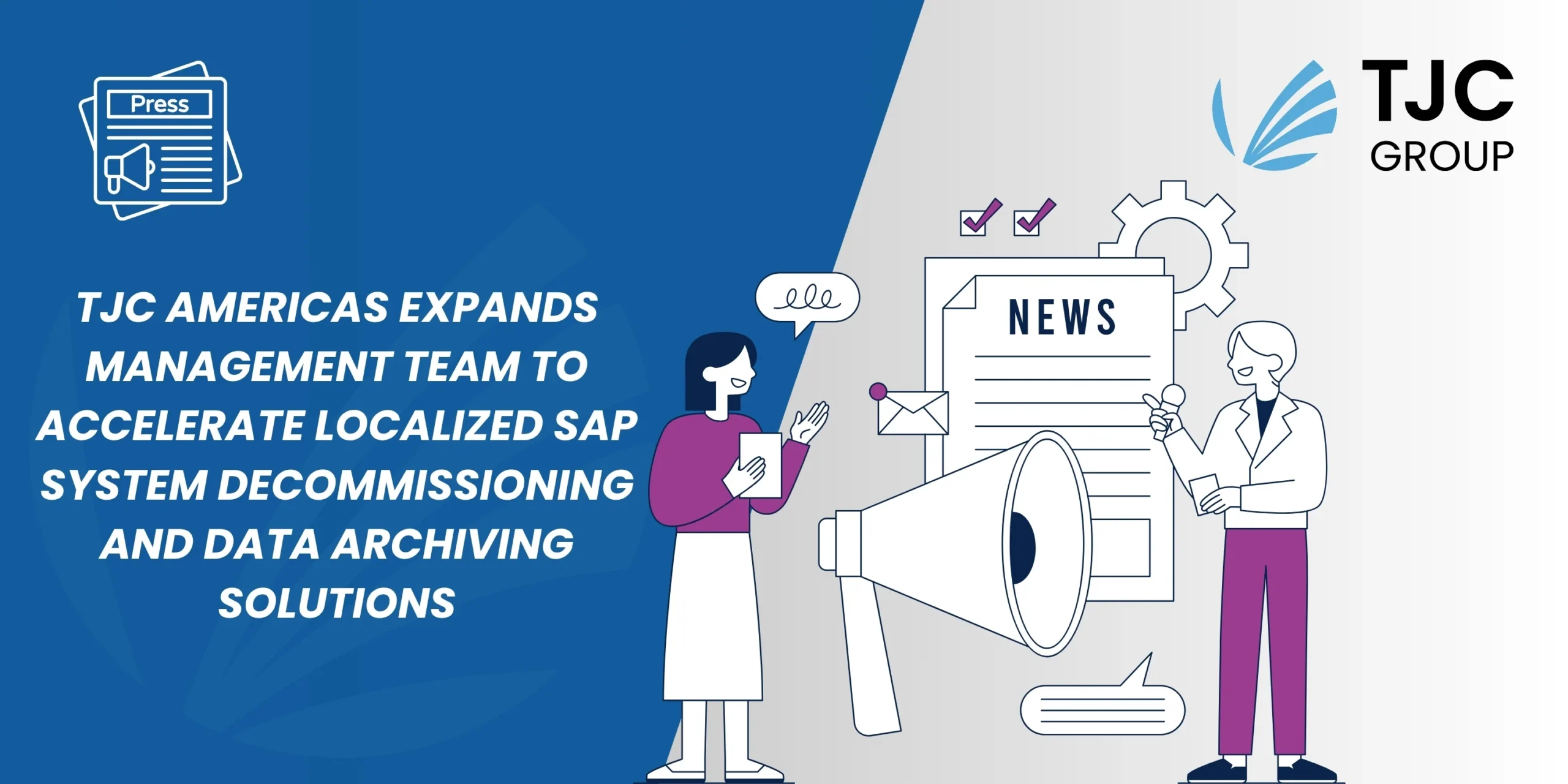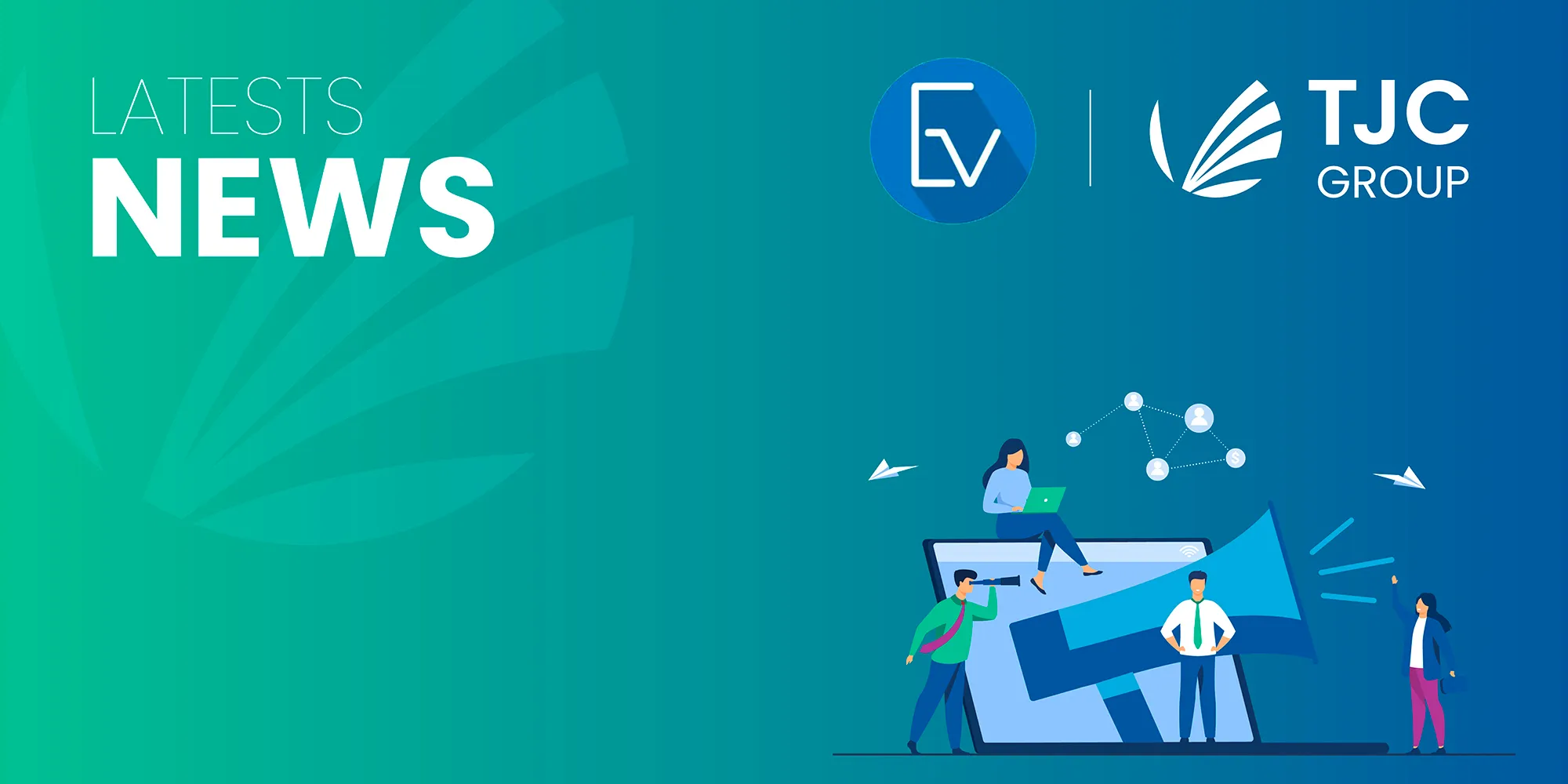Over time, it’s unavoidable that most organizations will amass substantial volumes of data scattered across outdated legacy systems. These systems are typically seldom used but contain significant data repositories, essential for business purposes and compliance with tax, audit, and data privacy regulations. As a result, holding legacy data is critical for an organisation, but can come at an enormous cost typically, becoming a drain on resources. According to IDC, 70% of IT budgets are spent on maintaining legacy systems.
Decommissioning legacy systems can provide a cost-saving advantage to the users. Legacy systems are often expensive to maintain, requiring specialised hardware and software personnel to manage them. By decommissioning them, organisations can save money by utilising newer technologies that are more efficient and cost-effective.
As businesses grow and expand, their technology needs change. However, keeping up with the latest technology can be a challenge, as businesses must consider the costs associated with upgrading, as well as the risks of continuing to use outdated systems. Decommissioning of legacy systems is a process that can help businesses stay up-to-date, reduce costs, and improve efficiency.
Five Reasons to Decommission Legacy Systems
Here are five reasons why businesses should decommission legacy systems.
Improved Security
Legacy systems are often vulnerable to security threats, as they are often out-of-date and not updated with the latest security patches. Decommissioning of legacy systems can help reduce the risk of data breaches and other security threats, as businesses can replace outdated systems with ones that are more secure.
Read more on how SAP vulnerabilities are prone to affect outdated systems in this article: https://www.tjc-group.com/blogs/is-it-safe-to-keep-legacy-data-in-an-old-sap-system/
Cost Savings
Decommissioning legacy systems will make a clear difference to your operating costs. Legacy systems are expensive to maintain and upgrade. Decommissioning SAP and non-SAP legacy systems cuts licensing costs, infrastructure and resource overheads. It’s not only the cost of storing data, and dealing with increased data growth year-on-year, but all these other tasks need monitoring as well. Servers, runtime, operating systems, etc.

Experts who understand how to manage legacy software can be hard to find. The older a legacy system is, the harder it is to source the knowledge required to operate and maintain it.
Improved Compliance
Legal regulations and GDPR data privacy requirements are frequently not enforced on old systems. The safest way to protect you organisation against future legal and tax requirements is to perform a complete system extract so that legacy data and documents are always inaccessible.
The following article sheds some light on Data privacy and legacy systems: https://www.tjc-group.com/blogs/data-privacy-and-cybersecurity-why-decommissioning-is-the-safest-bet/
Greener business
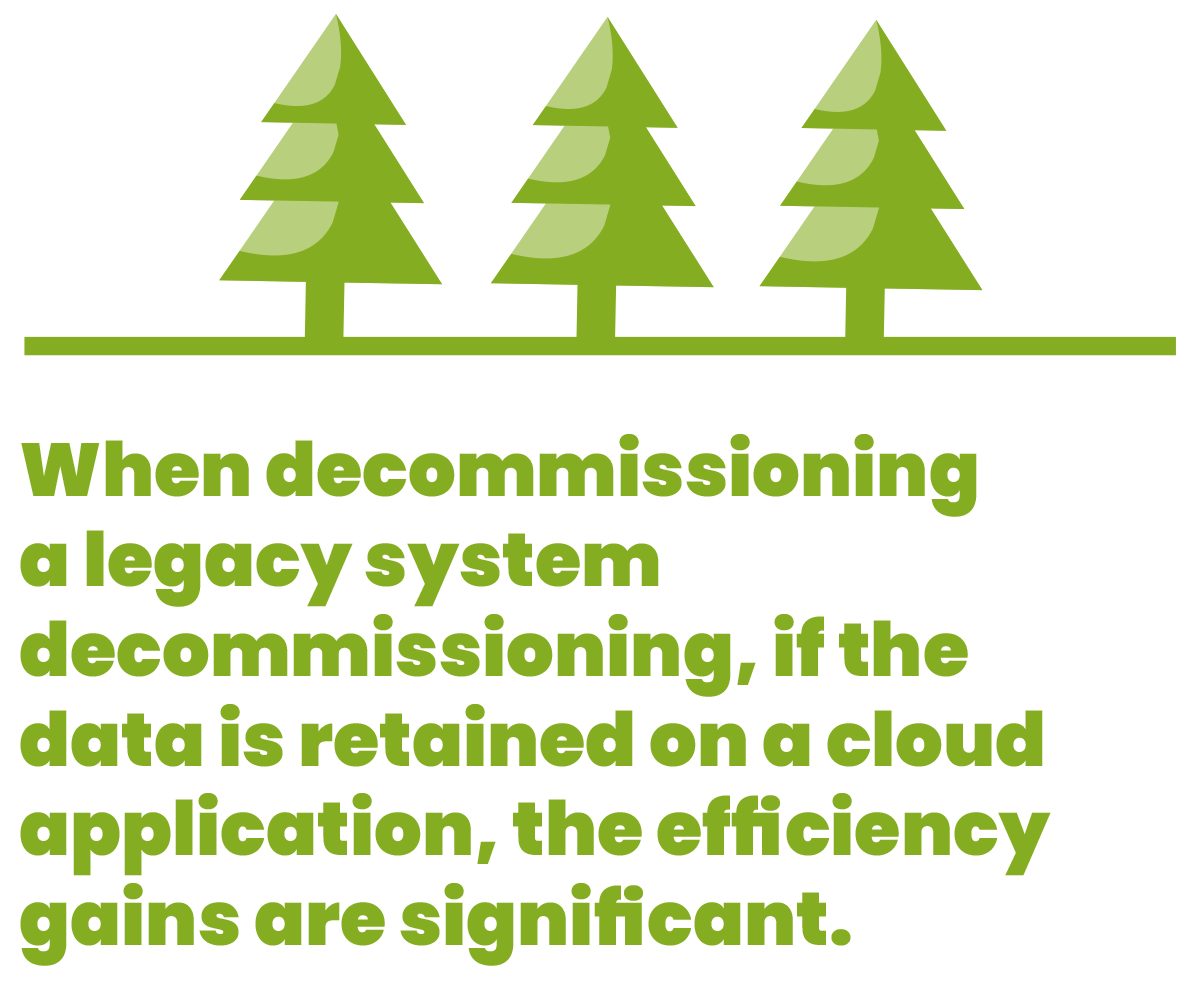
Read more on how to achieve your sustainability targets by decommissioning legacy systems: https://www.tjc-group.com/blogs/achieve-your-sustainability-targets-by-decommissioning-legacy-systems/
Improved Efficiency
Legacy systems can be cumbersome and inefficient. Decommissioning these systems can help businesses improve efficiency by replacing them with faster and more reliable solutions, avoiding technical debt. Decommissioning can prove highly valuable in the case of mergers and acquisitions, divestments or moving to the cloud.
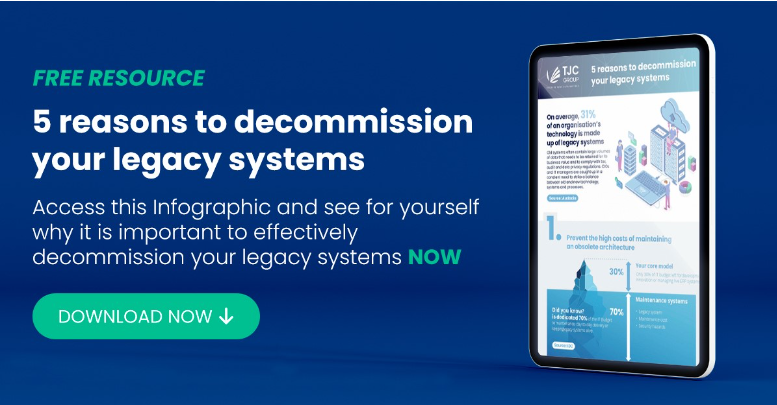
Things to Consider Before Decommissioning Legacy Systems
Decommissioning legacy systems can be complex and time-consuming, with a number of factors to consider. Here, we look at some of the key things to consider when decommissioning legacy systems.
- Data Extraction: One of the most important aspects of decommissioning legacy systems is data extraction. It involves transferring all data from the legacy system to storage option with all the guarantees needed for future compliance. At TJC Group we will extract 100% of the legacy data as a tax archive.
- Access legacy data: once the legacy system has been shut down, consider how to retrieve the legacy data quickly and easily. The new users are likely to be unfamiliar with the old systems. That’s why at TJC Group we have developed a Legacy system application, ELSA, that has a straightforward interface, even for users unfamiliar with SAP GUI transactions.
- Security: The security of the data is also an important factor to consider when decommissioning legacy systems. It’s essential to ensure that all data is properly protected and that any sensitive information is encrypted. It’s also important to consider the security of the system itself. This includes ensuring that all access points are secure and any potential vulnerabilities are addressed.
“By decommissioning outdated systems, businesses can reduce costs, improve efficiency, and ensure their systems are compliant with industry standards.”

TJC Group has developed a cloud application to make SAP and non-SAP system decommissioning hassle-free. TJC Group’s Enterprise Legacy System Application (ELSA) extracts a detailed audit report of all data which includes proof of completeness. Learn about ELSA key features in here: https://store.sap.com/dcp/en/product/display-2001010885_live_v1/enterprise-legacy-system-application-elsa-
Conclusion
Decommissioning of legacy systems can be daunting, but it is a necessary step for businesses that want to stay up-to-date, secure and, most importantly, compliant with legal requirements. TJC Group is helping customers worldwide to tackle system decommissioning projects to simplify their SAP landscape. Get in touch today for a FREE assessment.






